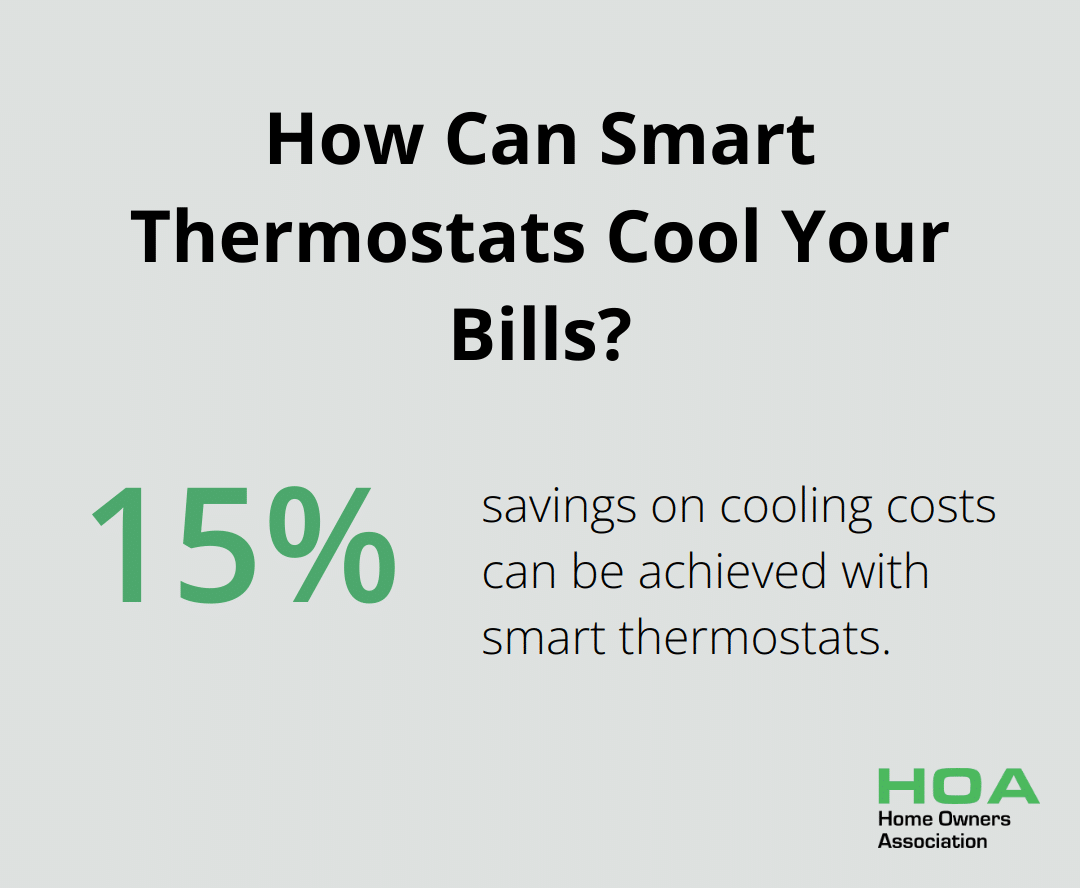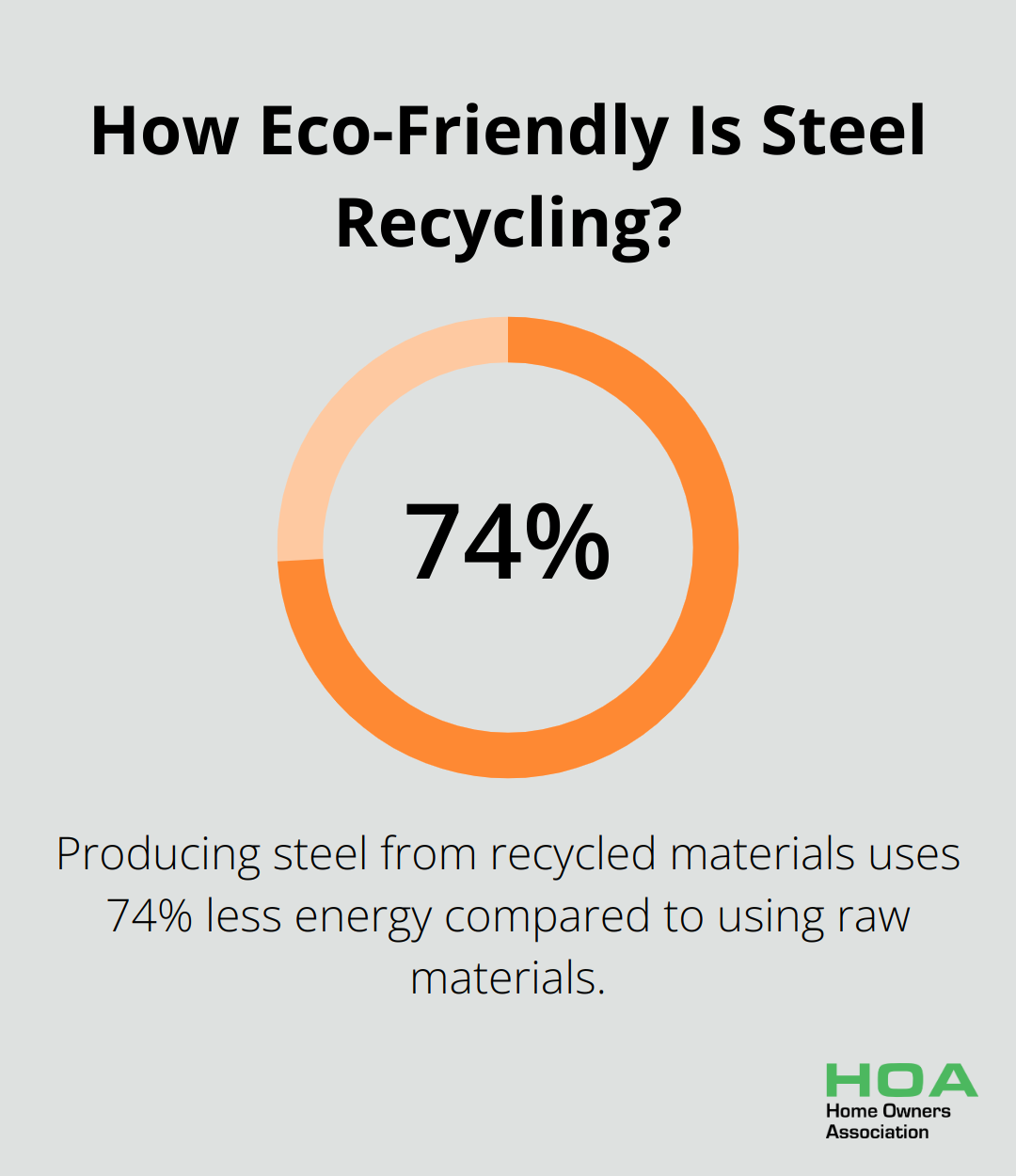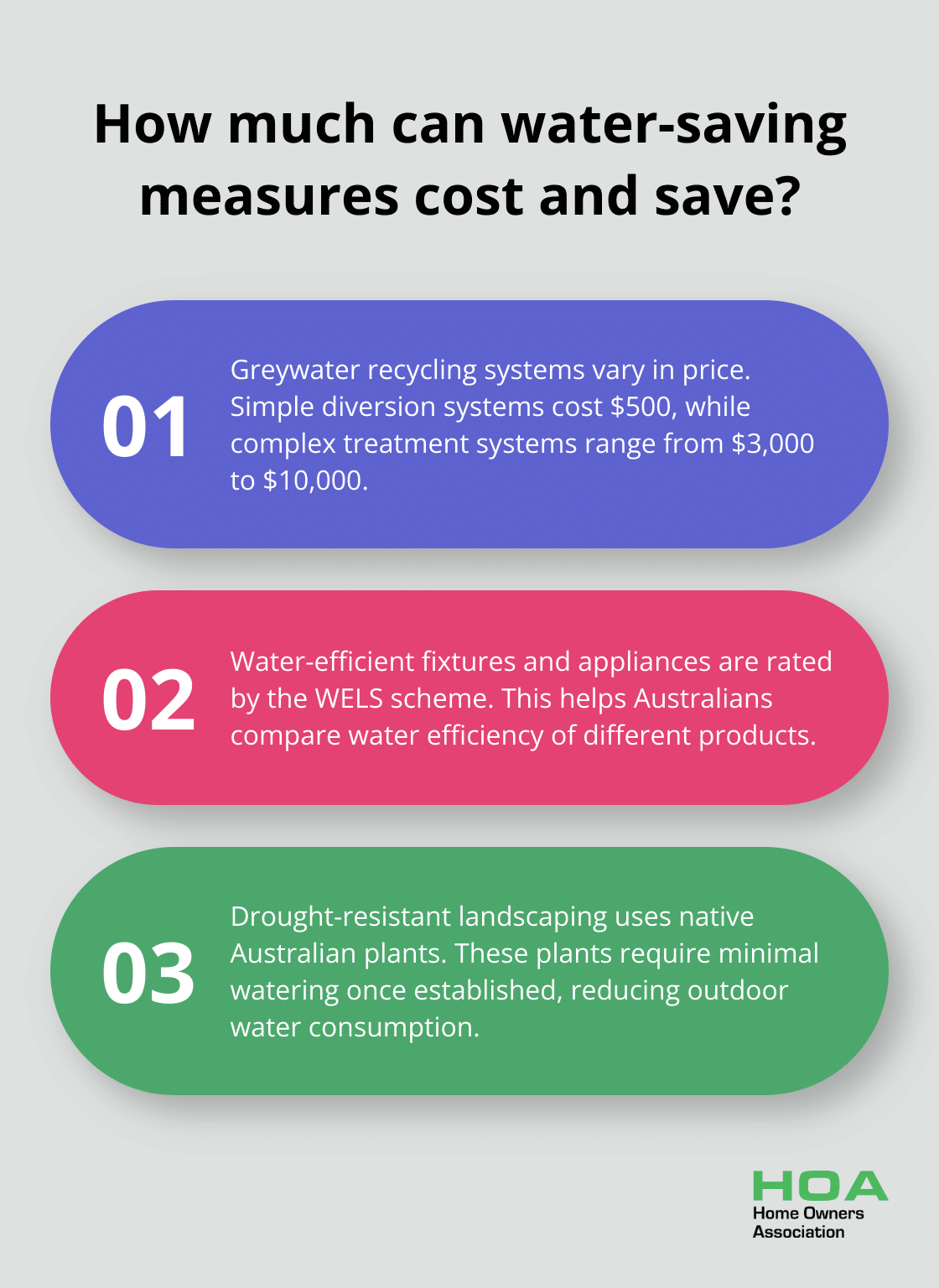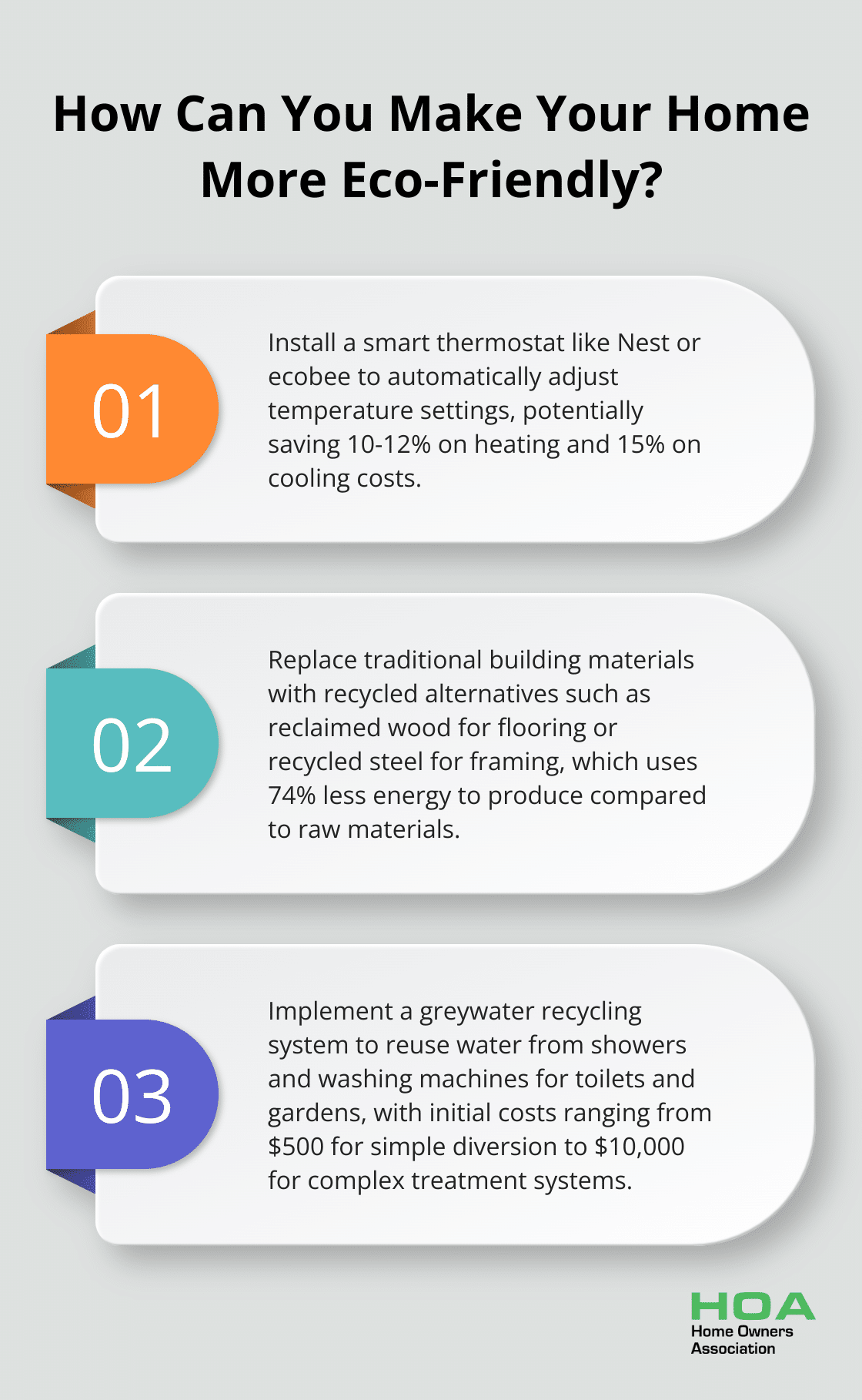
At Home Owners Association, we’re excited to explore 10 sustainable building practices that are reshaping modern home construction. The demand for eco-friendly homes has skyrocketed in recent years, with homeowners seeking ways to reduce their environmental impact and energy costs.
In this post, we’ll dive into cutting-edge techniques for energy-efficient design, eco-friendly materials, and water conservation. These innovative approaches not only benefit the planet but also create healthier, more comfortable living spaces for you and your family.
How to Design Energy-Efficient Homes
At Home Owners Association, we’ve witnessed a significant shift towards energy-efficient home design in recent years. This trend doesn’t just reduce utility bills; it creates comfortable, sustainable living spaces that minimize environmental impact.
Harnessing Solar Power
Passive solar design revolutionizes energy-efficient construction. A well-designed passive solar home first reduces heating and cooling loads through energy-efficiency strategies and then meets those reduced loads in whole or part with solar energy. The orientation of a home to maximize southern exposure naturally heats and cools spaces throughout the year. Large, south-facing windows allow sunlight to warm the home during winter, while roof overhangs provide shade in summer.
Insulation: The Silent Efficiency Champion
High-performance insulation maintains a comfortable indoor temperature year-round. We recommend focusing on the building envelope (walls, roof, and foundation). Spray foam insulation seals air leaks and provides an R-value of 6-7 per inch, significantly higher than traditional fiberglass batts.
Smart Technology for Efficient Homes
Smart home technology elevates energy efficiency. Smart thermostats (like those from Nest or ecobee) learn your habits and automatically adjust temperature settings, potentially saving 10-12% on heating and 15% on cooling costs. Smart lighting systems with motion sensors and scheduling capabilities can cut lighting energy use significantly.
Energy-Efficient Windows
High-quality windows significantly impact energy efficiency. Double-pane or triple-pane windows with low-E coatings reduce heat transfer.
Ventilation: Balancing Efficiency and Air Quality
While an airtight home improves energy efficiency, proper ventilation maintains indoor air quality. Heat recovery ventilators (HRVs) or energy recovery ventilators (ERVs) provide fresh air while retaining heat from outgoing air.

These energy-efficient design principles not only reduce your carbon footprint but also create a more comfortable living environment. As we move forward, let’s explore how eco-friendly materials and resources complement these energy-efficient designs to create truly sustainable homes.
Eco-Friendly Materials for Sustainable Homes
At Home Owners Association, we observe a significant shift towards eco-friendly building materials. This trend reduces environmental impact and creates healthier living spaces. Let’s explore some of the most effective and practical options for sustainable home construction.
Recycled and Upcycled Materials
Recycled materials revolutionize the construction industry. Reclaimed wood adds character to homes and reduces deforestation. The U.S. Forest Service reports that using reclaimed wood can save up to 13 trees per home built.
Recycled steel changes the game. It’s incredibly strong and can be recycled repeatedly without losing its properties. On average, producing steel from recycled materials uses about 74% less energy compared to using raw materials.

Innovative companies turn plastic waste into building materials. Conceptos Plásticos in Colombia transforms plastic and rubber waste into bricks that are 30% cheaper and 40% lighter than traditional bricks (while also being fire-resistant and earthquake-resistant).
Sustainable Timber and Forest Products
For wood products, certification is key. The Forest Stewardship Council (FSC) certification ensures that timber comes from responsibly managed forests. FSC-certified wood products are widely available for framing, flooring, and cabinetry.
Bamboo gains popularity as a sustainable alternative to hardwood. It grows incredibly fast – up to 91 cm per day – making it a highly renewable resource. Bamboo flooring is durable, with a hardness rating often exceeding that of oak.
Cork serves as another excellent option for flooring and insulation. It’s harvested from the bark of cork oak trees without harming the tree, making it a truly sustainable choice. Cork flooring is naturally antimicrobial and hypoallergenic, contributing to better indoor air quality.
Low-VOC Paints and Finishes
Volatile Organic Compounds (VOCs) in traditional paints and finishes can off-gas for years, negatively impacting indoor air quality. Low-VOC and zero-VOC options are now widely available and perform just as well as their traditional counterparts. However, non-toxic paint is more expensive than traditional paint.
The EPA reports that indoor levels of VOCs can be up to ten times higher than outdoor levels. Choosing low-VOC paints can significantly reduce this indoor pollution. Many major paint brands now offer low-VOC lines, often at comparable prices to standard paints.
For wood finishes, water-based polyurethane is an excellent low-VOC option. It dries faster than oil-based alternatives and is much easier to clean up, making it a practical choice for DIY projects.
These eco-friendly materials significantly reduce environmental impact while creating healthier living spaces. As innovation continues in this field, the options for sustainable building will expand, making green construction more accessible and affordable for all homeowners. The next chapter will explore how water conservation and management techniques complement these sustainable building practices to create truly eco-friendly homes.
How to Conserve Water in Modern Homes
At Home Owners Association, we recognize water conservation as a critical aspect of sustainable building design. As Australia faces increasing water scarcity, we must implement effective water management strategies in our homes.
Rainwater Harvesting: A Sustainable Solution
Rainwater harvesting systems reduce reliance on mains water supply. These systems collect rainwater from your roof and store it in tanks for later use. This review examines the factors that influence the use of roof harvested rain water in Australia and the potential human health consequences.
Greywater Recycling: Maximizing Water Efficiency
Greywater recycling systems take water from showers, baths, and washing machines and treat it for reuse in toilets and gardens.

A simple greywater diversion system costs as little as $500, while more complex treatment systems range from $3,000 to $10,000. Despite the initial investment, the long-term savings on water bills make these systems increasingly attractive to Australian homeowners.
Water-Wise Landscaping: Beauty Meets Efficiency
Drought-resistant landscaping, or xeriscaping, offers a smart approach to outdoor water conservation. Native Australian plants adapt naturally to our climate and require minimal watering once established.
Mulching provides another effective technique. A 5-10cm layer of organic mulch can reduce evaporation, which keeps your plants hydrated with less frequent watering.
Smart irrigation systems with soil moisture sensors further optimize water use.
Efficient Fixtures and Appliances
Water-efficient fixtures and appliances play a crucial role in conservation efforts. The Water Efficiency Labelling and Standards (WELS) scheme helps Australians compare the water efficiency of a range of appliances and fixtures.
These water conservation techniques significantly reduce our environmental impact while also saving on utility costs. As we continue to face water scarcity challenges, these practices will become increasingly vital for sustainable living in Australia.
Final Thoughts
The 10 sustainable building practices we discussed reshape modern home construction. These practices offer a comprehensive approach to creating environmentally responsible, comfortable, and cost-effective homes. Homeowners who adopt these practices can expect reduced energy bills, improved indoor air quality, and increased property values.

At Home Owners Association, we support Melbourne homeowners in their journey towards more sustainable living. Our members receive trade pricing and discounts on sustainable building materials, as well as expert advice on implementing these practices effectively. We encourage all homeowners to consider incorporating these techniques into their next building or renovation project.
The adoption of sustainable building practices is no longer just an option – it’s a responsibility. We can create homes that meet our needs today and preserve resources for future generations. Together, we can build a more sustainable Melbourne, one home at a time.





